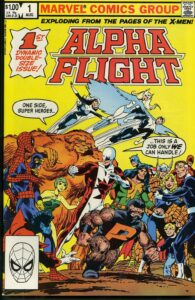by Stevie Horn
University Archives and Special Collections, University of Saskatchewan
A question we are frequently asked at our front desk is why we hold certain things within our special collections. How are our collection choices made? Is the idea to restrict access? And why oh why are some books that were published as recently as last year considered too ‘special’ to be taken out of our closed stacks?
If we were to play a game of association, and I were to say “special collections library”, what would flash into most peoples’ minds is the image of the centuries-old manuscript, bound in leather, with crumbling pages that smell faintly of vanilla. But that only paints a part of the picture. What a special collections is, and what a special collections can be runs much, much deeper–and may look far different overall.
For example, at the University of Saskatchewan Archives and Special Collections, we have four main collection areas for rare and special books, each with its own distinct collection mandate. Our Rare Books collection contains primarily those things one would expect to find in a special collections library: medieval texts scrawled out in Latin, Victorian novels, first editions. The University Authors collection is just as self-explanatory — we endeavor to collect published works by University Faculty in order to have as complete a collection of the significant research outputs of the University of Saskatchewan as we can.
We also are home to the Neil Richards Collection for Sexual and Gender Diversity. Certainly one of our most interesting book collections (and the second largest overall), the objective of the Richards collection has been to gather LGBTQ2 materials, with a particular focus on popular culture, pulp novels, queer mysteries, and Canadian queer texts. The Richards collection has grown to be the largest of its kind in Western Canada.
All of these collections have some overlap with our largest special collection of books: The Shortt Collection of Canadiana. The mandate for this collection has been looser over the years than those applied to the other collections (the Shortt collection ambitiously attempts to absorb Canadian-themed fiction and non-fiction primarily by Canadian-based authors, with a specific focus on Western Canada and Western Canadian History) In this diverse collection users can find everything from local history books (nearly one from every town in the province) to the novels of Gail Bowen, to church cookbooks, to 18th century explorers’ accounts, to current aboriginal interest newspapers, and more. While some of the items may seem too recent, or too widely or too locally distributed to be considered ‘special,’ it is the collection as a whole that has meaning, and which provides the greatest research value.
One recent addition to the Shortt collection which may fall into the “you have WHAT in your special collections?” category is two boxes of:

Alpha Flight. New York, N.Y. : Marvel Comics Group, 1983- SPECIAL COLLECTIONS-SHORTT PN6728 .A4 1983-1993 v.1 no.1 — v.1 no.120**
Alpha Flight? Never heard of it? And isn’t Marvel comics American anyway? Surely a sub-mandate of the Shortt Collection of Canadiana cannot be to collect comic books from the 1980’s. Isn’t that an odd fit?
This is true–comic books have not been an area of focus within the Shortt collection. Typically, any incoming comic books have been earmarked for Richards. Perhaps this is because queer comic book heroes are, in this time of the graphic novel, easier to find than Canadian ones (the Canadian comic book golden age ended in 1946, according to John Bell in his book Invaders from the North: How Canada Conquered the Comic Book Universe (2006)). Whatever the reason, we have fewer Canadian-centric comic books in the Shortt collection than we might like, and are working to remedy that situation.
So what better place to begin than with Alpha Flight? This team of Canadian superheroes, headed by James Macdonald Hudson (aka Vindicator, aka the Man with the Most Canadian Names), originally appeared in the late seventies as a part of the backstory to Marvel’s most well-known Canadian, Wolverine. The fact that the Alpha Flight team had its own decade long run of books within the Marvel universe is itself significant, given Marvel’s dominant role in the comic book industry, and given the minimal role Canadian superheroes have historically played within that industry.
The Alpha Flight books provide an amusing window on how Canadians were viewed by our American neighbors at this point in time. With characters like the Montreal-born Jean-Paul and sister Jeanne Marie Beaubier (aka Northstar and Aurora), a large hairy Sasquatch named Walter Langowski, and Eugene Judd a roughly puck-shaped bouncer from our own Saskatoon, Alpha Flight makes a caricature of Canadian-ness. Even the heroes’ costumes look like Team Canada’s Winter Olympic speed-skating apparel.
With Canada experiencing a recent resurgence of acknowledgement on the world stage (according to the New York Times, we’re “hip” now), collecting materials on what it is to be Canadian, what it was to be Canadian, and how Canadians have been viewed over time will become more important than ever. We are a nation that is constantly feeling out its own identity, and collections like the Shortt Collection of Canadiana provide a basis for that understanding.
Sources:
Alpha Flight. New York, N.Y. : Marvel Comics Group, 1983- SPECIAL COLLECTIONS-SHORTT PN6728 .A4 1983-1993 v.1 no.1 — v.1 no.120
Bell, John. Invaders from the North: How Canada Conquered the Comic Book Universe. Dundurn, 2006.
“With the Rise of Justin Trudeau, Canada Is Suddenly … Hip?.” The New York Times, Jan. 16, 2016
*this blog post has been modified with permission from the author from a posting on the blog What’s That, UASC? on January 19, 2016.
**Copying and/or duplication of the above image without express and written permission from the copyright holder is strictly prohibited.
This article gives the views of the author(s) and not necessarily the views of the Centre for Evidence Based Library and Information Practice or the University Library, University of Saskatchewan.

